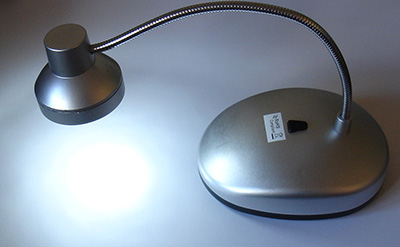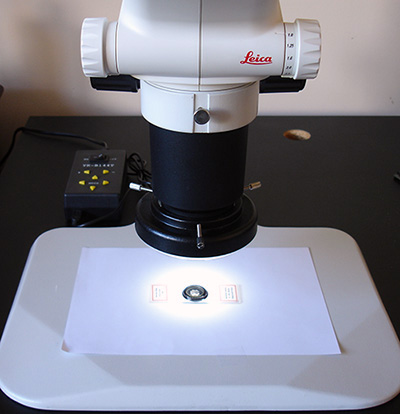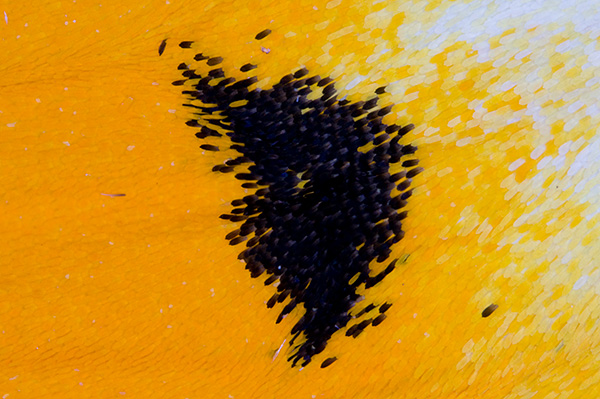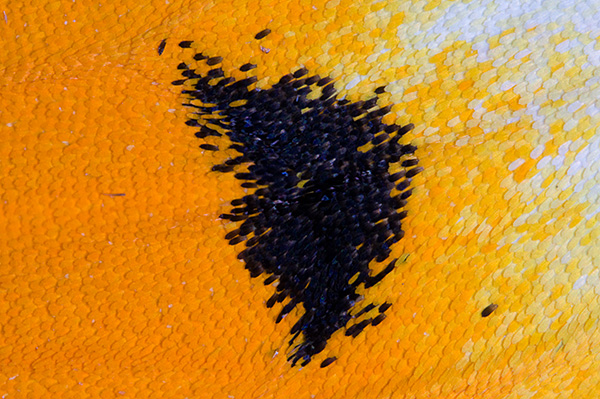

|
Product review: A 144 LED ring light for the stereo microscope (typical model YK-B144T) by David Walker, UK |
Some stereo microscopes are supplied with transmitted and/or incident lighting such as my secondhand Meiji EMZ1 with the PBH stand as shown later below. Many recent models are supplied without lighting as standard with the maker's modular lighting being optional, but these can be expensive extras. With the wide availability of LED lighting systems, effective incident lighting can be purchased or built at modest cost; two examples are shown below.


Two fixed intensity LED light sources currently used on my microscopes. Note that the limited dynamic range of the camera makes the beams appear more intense than they are.
Left: The off-the-shelf design using a mains powered USB hub (<£20) as described by Andy Chick (Micscape March 2012) based on an earlier design described by Andrew Entwistle (Micscape June 2006). As Andrew suggested, I replaced one LED, in this case with a wider beam but the same V/I requirements so as not to disturb the electronics. The short light guides make it suitable for small base stereos but they don't have the reach for larger bases such as the Leica S model below.
Right: A bargain shop 10 LED lamp (<£10) run on 3 AA batteries. Cheap n' cheerful and handy if mains power not available, but insufficient intensity for higher mag work, the batteries don't last long and can't get close to subject.
Light guides, either home brew or professional systems, can be very useful when localised and/or careful control of the lighting is desired. If studying a variety of subjects especially if at different heights, the guides may need regular adjustment to concentrate the beams at correct height and orientation; they may also restrict manipulation of the subject if that is required.
I was looking for a versatile 'fit and forget' variable intensity lighting system especially for photo work and decided to try one of the many east Asian LED ring lights. Models with typically 54 to 144 LEDs are available and opted for 144 as my second modern stereo has a zoom up to 80x where a high light intensity can be needed. The unbranded model YK-B144T was bought via eBay direct from China (seller 'sun_mart') for £57 including shipping and arrived in one week with no extra charges. What appears to be identical or very similar models are sold locally by a number of microscope dealers. US examples can sell close to the direct price, but in the UK there are some high mark-ups, with some dealers charging £270 and £359 for the same model code.
Comments on this model's design, features and use are included in the image captions below and pros / cons summarised at the end. The supplier's full specifications of the model are quoted in an Appendix.

The LED ring light as supplied in fitted box. An additional fitting collar is supplied for smaller diameter stereo models. A UK power supply was supplied. Cabling on the mains and low voltage side was generous. Mains to the control box used a standard removable razor style two pin plug and autodetects 90-265V 50/60Hz. The low voltage output is 12V and used an unpluggable mini USB type design.

Ring light with control box. The black support for the LED unit is enamelled metal. The three rows of LEDs angle inwards. Fit and finish may vary a little between suppliers, this example has plastic tips to clamping screws to prevent damage to the microscope.
The long clamping screws (knurled and with screw slot) should allow attachment to stereos with a wide range of diameters if the design has clearance to take the unit. An additional supplied collar has a 47 mm OD male thread for stereos that can take this fitting.
There are ten sequential power settings using the +/- buttons.
The four mode buttons independently switch on and off the four sectors of the ring light; any combination can be set, eg any quarter, two opposing quarters, half on each x/y axis, one quarter off etc.
The current intensity and mode settings are retained after switch off.


Left: Ring light fitted to a typical modern stereo (in this case a Leica 'S' range model), shown at focus position. The ring light (I.D. 61 mm) is a good match for this diameter optics (O.D. 58 mm). The control box in this instance is sited behind (immobilised with a little plasticine underneath) to give a clear working area, especially useful if extensive subject manipulation is involved. The lowest of ten intensity settings is set for the photo.
Right: Mounted on a Meiji EMZ1 (O.D. 60 mm) which is also a good fit. Although the PBH stand shown has incident and transmitted lighting, unlike the LEDs, the variable intensity halogen bulbs do not maintain a constant colour temperature which can be useful, especially for photography.
An even light is provided over a wide range of focus distances enabling use of accessory lenses that still remain in the range (supplier's state that even light is between 40 - 250 mm working distance). The maximum intensity of 100 000 Lux is far more than required for much visual work at lower mags (intensity setting 1-3 was used for visual at 10X and 4-6 at 80X). For my photo setup, DSLR camera vibration on the long photo port can be a problem and the wide light intensity range allows a shutter speed to be set outside the known vibration zone. At 10X the shutter speed range across the 10 intensity settings was 1 sec to 1/60th sec, at 80X it was 5 sec to 1/10th sec (ISO 200).
The ring light design can't offer the same control of modeling that two gooseneck light guides can by working closer to the subject and option for more pronounced lighting angles, but for most subjects I prefer the ring light's greater convenience and versatility and accurate control of light intensity. Goosenecks are always some way off axis making the setting of even lighting when required more difficult which is where the ring light has the advantage as a starting point and switching on/off quadrants for modeling if desired.

Detail of orange tip butterfly wing at 30X optical mag with all ring light quadrants lit. The flat lighting gives little modeling of the scales. Flat lighting can suit e.g. printed media.

Same subject with one quadrant llt on the left and light intensity increased for same shutter speed. Scale modeling is better for this demanding subject. The control of each quadrant allows real time trials of lighting to be tried for best effect of each subject. Gooseneck light guides would require more manipulation to determine best modeling.
Overall, after some months use, the ring light has worked very well and it's now my preferred lighting both for visual and photo work for most subjects. A summary of the pros and cons from my own perspective are below.
Pros:
- mains powered for reliability.
- high intensity available for high magnification work.
- a cold white with a constant colour temperature when varying the intensity.
- selectable and repeatable intensity settings, useful for setting a certain camera shutter speed.
- versatile modeling facility.
- easy to quickly remove and install.
- small desktop footprint, the PSU of high power halogen cold light sources can be bulky.
- work space around subject kept clear.
- light does not need readjusting with refocusing at varying subject heights.
- possible additional role for indoor macro photography by clamping to suitable camera lens.
Cons:
- quite expensive, although home brew systems may cost half to a third of the lowest price.
- the LEDs are some distance from the sample and close to optical axis, so modeling isn't as marked or as versatile as with 1-2 light guides.
To complement the incident lighting chosen, a useful form of transmitted light which have been using for some years on stereo microscopes, is one of the smaller fluorescent light panels designed for inspecting 35 mm slide film. The newer slim line models are particularly suited, see this Micscape March 2007 'Topical Tip' 'The versatile light panel'.
Comments to the author David Walker are welcomed.
Appendix: Supplier's quoted specifications and features for the YK-B144T:
Features
Specifications
Published in the July 2012 edition of Micscape.
Please report any Web problems or offer general comments to the Micscape Editor .
Micscape is the on-line monthly magazine of the Microscopy UK web site at Microscopy-UK
©
Onview.net Ltd, Microscopy-UK, and all contributors 1995
onwards. All rights reserved.
Main site is at
www.microscopy-uk.org.uk.